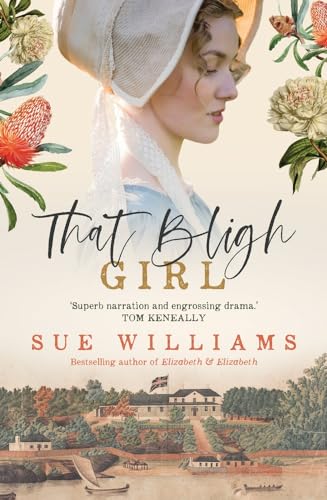That Bligh Girl
The early 1800s. Governance of the convict colony of New South Wales is in disarray and borders on anarchy at the hands of a cartel of military officers who use rum as currency. The British Government needs someone who can clear up the corruption. Who better than that notoriously zealous stickler for order, Captain William Bligh, who survived the infamous Mutiny on the Bounty?
Bligh takes up the position of Governor with relish and sails into Sydney with his daughter, Mary, and her new husband, John Putland. Mary has always had a stormy relationship with her hot-tempered father and struggles with his insistence that she serve as “first lady”. As with Bounty, it will be Bligh’s obstinacy and lack of diplomacy that inevitably creates more trouble.
Mary’s narrative is related in tandem with that of Meg, her convict maid. Initially, Mary appears frivolous – especially as regards her obsession with fashion and social position – but she proves her mettle when she stands her ground at the gates of Government House, her only weapon a parasol, as she refuses to let the mutinous New South Wales Corp arrest her father.
Although Mary will suffer for her loyalty, Meg observes: “While she had once dismissed her mistress as the spoiled daughter of a controlling father, she now watches her emerge as the stronger and more determined and perhaps even the eminently more human of the two Blighs”.
Meg’s convict story is not unusual, but that of Mary Putland, William Bligh and the Rum Rebellion may not be as well-known as the famous Bounty, and the novel is recommended for that reason. (Several prominent living Australians have Bligh connections, including Anna Bligh, former premier of Queensland, and Malcolm Bligh Turnbull, former prime minister.)










